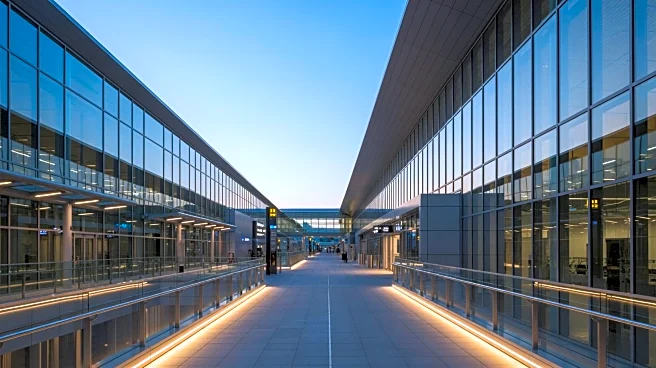What's Happening?
Pittsburgh International Airport is set to open its new $1.7 billion terminal to the public on Tuesday, marking the completion of a four-year construction project. The transition to the new terminal is scheduled
to occur overnight, ensuring minimal disruption to airport operations. This development is part of a broader effort to modernize the airport's facilities and improve the overall passenger experience. The new terminal is expected to offer enhanced amenities and streamlined services, catering to the needs of travelers and supporting the airport's role as a key transportation hub in the region.
Why It's Important?
The opening of the new terminal at Pittsburgh International Airport is a significant milestone in the airport's modernization efforts. This development is poised to boost the local economy by attracting more travelers and potentially increasing tourism and business travel to the area. The improved facilities are likely to enhance passenger satisfaction and could lead to increased airline traffic, benefiting both the airport and the airlines operating there. Additionally, the project reflects a broader trend of infrastructure investment aimed at upgrading transportation facilities across the United States, which is crucial for maintaining competitiveness in the global travel industry.
What's Next?
As the new terminal opens, airport officials will monitor its operations closely to ensure a smooth transition and address any initial challenges that may arise. The focus will be on optimizing passenger flow and maximizing the use of new technologies integrated into the terminal. Stakeholders, including airlines and local businesses, are expected to assess the impact of the new facilities on their operations and explore opportunities for growth. The airport's management may also consider further enhancements or expansions based on feedback from travelers and industry partners.
Beyond the Headlines
The opening of the new terminal at Pittsburgh International Airport may have broader implications for regional development. Improved airport facilities can serve as a catalyst for economic growth, potentially attracting new businesses and investments to the area. Additionally, the project highlights the importance of infrastructure development in supporting sustainable transportation solutions and reducing environmental impact. As airports across the country seek to modernize, the lessons learned from Pittsburgh's experience could inform future projects and policies aimed at enhancing transportation networks.













